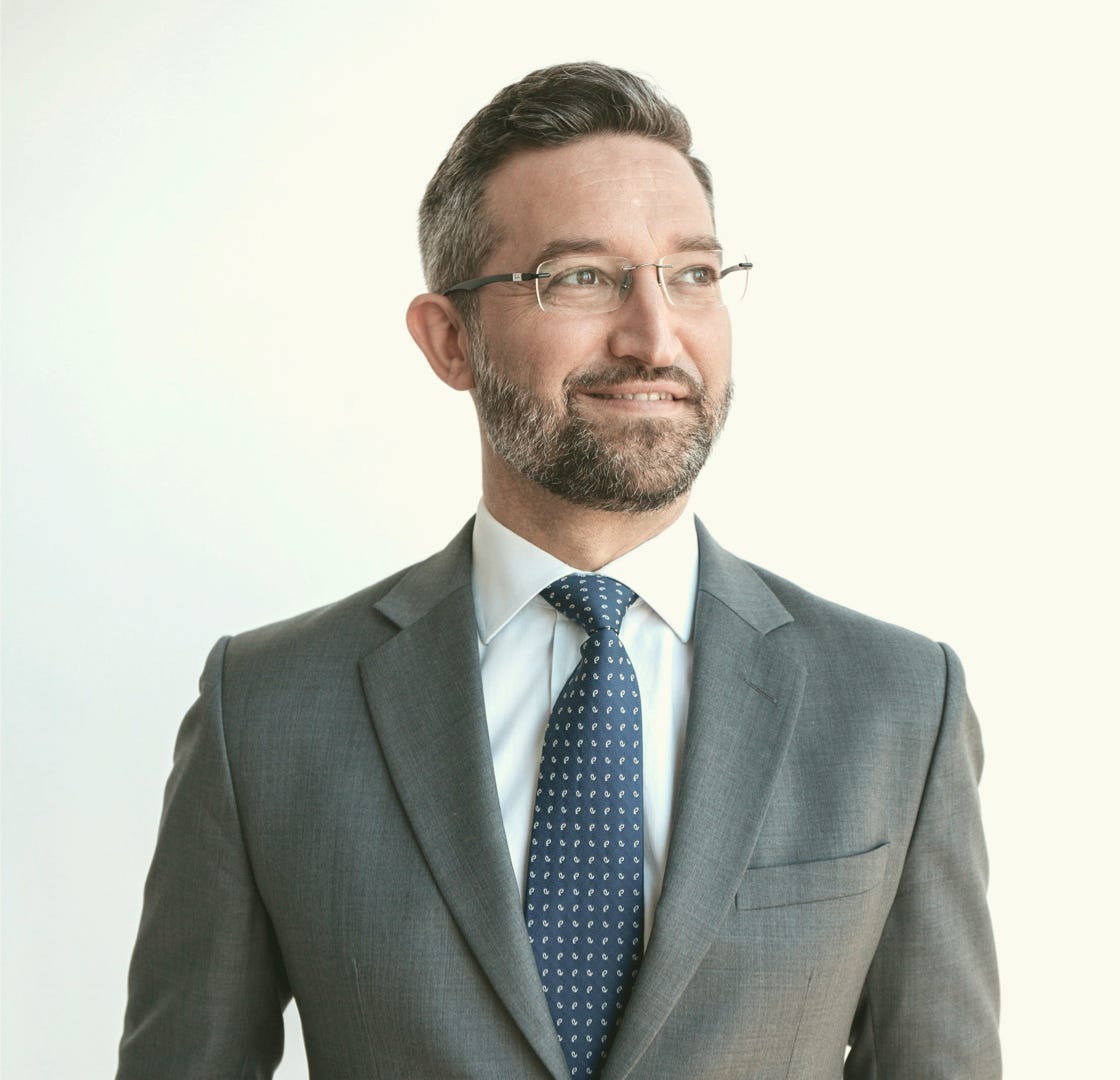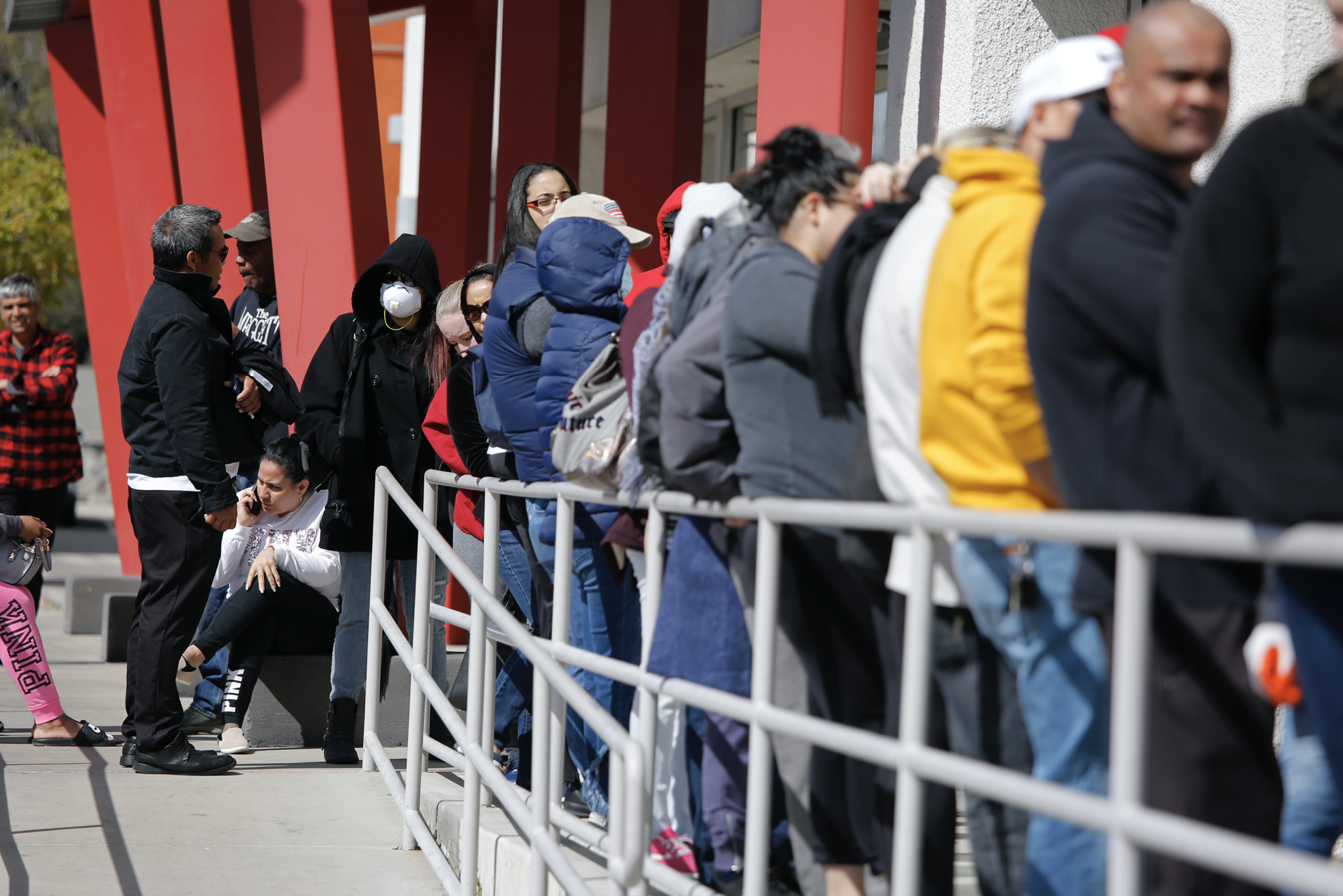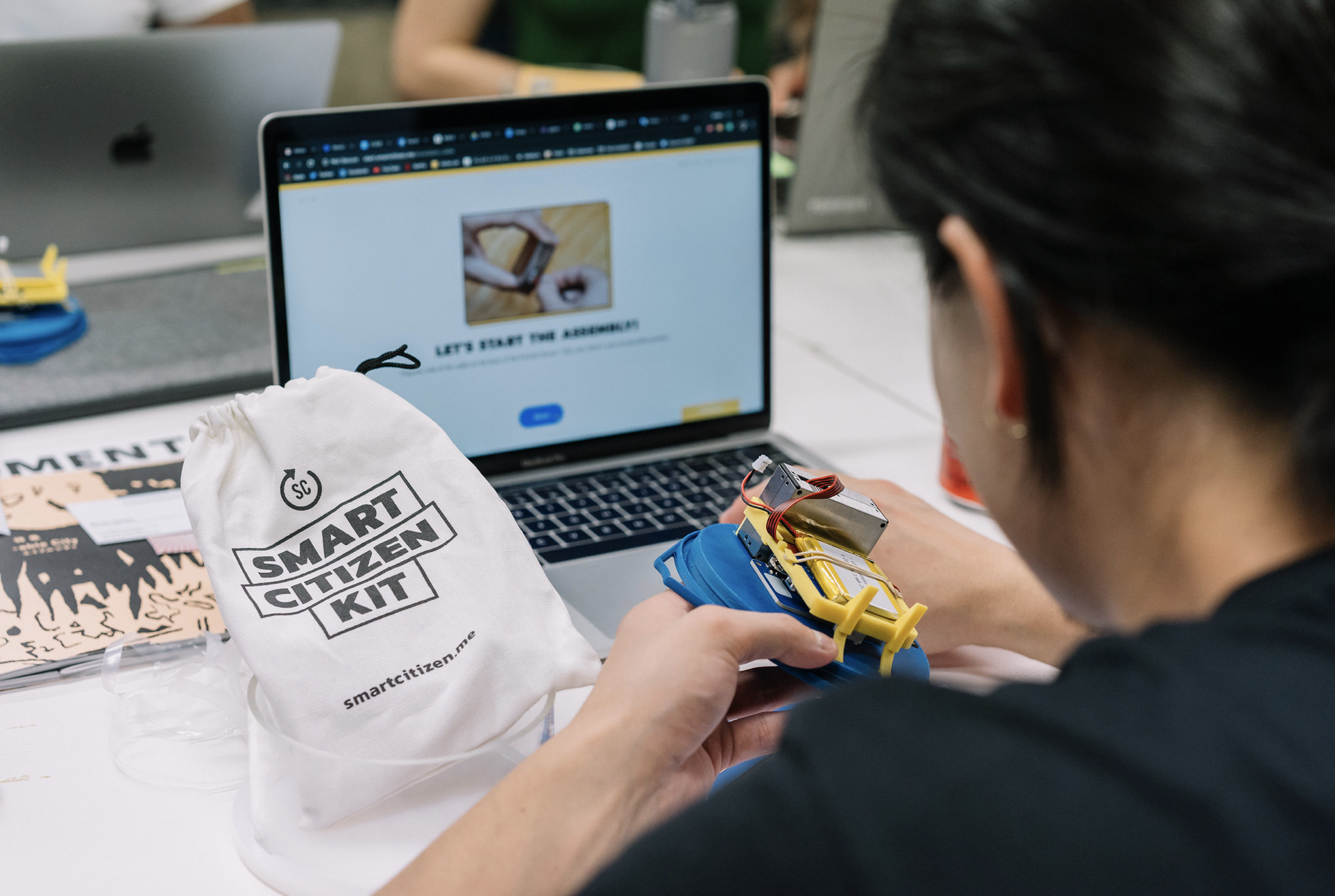Future Tense #1: Three Post-COVID Scenarios with Noah Raford
Published in ATÖLYE Insights · 12 min read · May 29, 2020
An event series exploring plausible futures
Main authors: Deniz Yazıcıoğlu (Academy Coordinator, ATÖLYE), Engin Ayaz (Co-founder, ATÖLYE)Contributing author: Noah Raford
At ATÖLYE, we have always been an advocate of adopting a long-term thinking lens to tackle complex challenges. We believe that to design for a better future, one needs to develop a whole range of skills - and a "futures lens" is certainly one of high relevance.
Following along with this mindset, as the COVID-19 crisis emerged, our immediate reaction was not to join the ranks of the daily data discourse. There were bright minds aplenty that focused on this.
Rather, we wanted to cast an approach that explored long-term implications of the systemic shock that we were all living through. Albeit as a sketch, the "9 Predictions for a post-C19 World" article emerged in mid-March, more so to stimulate conversation rather than offer a single source of truth.
Expanding upon this mindset, we decided to launch the event series "Future Tense" to engage thought leaders from around the world and to discuss pressing issues with a long-term thinking lens.
About the Future Tense event series
The foundational purpose in Future Tense is not only to listen to a thought leader, but create room for generative conversations and harvest emerging intelligence around possible futures that await us. Especially given the excessively chaotic Turkish and global context, we believe that there is a dire need to create room for discourse beyond the immediate future.
The below was framed as our intro paragraph to the event series, perhaps with a bit of a poetic approach:
"We live in chaotic times. Turbulent news wash over us by the minute, preventing us from thinking properly about the long term. Yet now, more than ever, this is the right time to slow down, to reflect and to think deliberately about the long-term future.
Consider yourself the captain of a sailboat in stormy seas. Wouldn't it be both calming and wise to deliberately take your eyes off choppy, nauseating waters and look into the far horizon? To gain perspective and think about the big tacks you may need to make, alongside the constant trimmings you are obliged to do."
With all these intentions in mind, we designed a 90-minute journey, where a guest speaker shares his body of thinking about the future (preferably for about 20–25 mins), followed by small-group discussion amongst participants, a real-time poll via Mentimeter (menti.com), and a facilitated Q&A session. We will have a diverse range of speakers, and try to host them on a monthly basis.
The first session: Noah Raford
Our first guest to kick off the series was the Futurist-in-Chief and Chief of Global Affairs for the Dubai Future Foundation, Noah Raford. Noah, per his official biography on his personal website, is responsible for identifying emerging opportunities, strategic partnerships, and future initiatives for the Government of Dubai, as well as leading the Foundation's thought leadership and partnerships activities. He is also responsible for the Museum of the Future, which is currently under construction in Dubai.

With decades of front-line experience applying foresight to real policy and strategy challenges, Noah was the perfect guest to kick off the Future Tense series.
Noah's presentation started with some background on the work of DFF and on why foresight is so essential. He then discussed some major trends at work on the future today, using some interesting examples of post-COVID-19 scenarios from a volunteer group of global futurists (unrelated to DFF), called the Special Circumstances Intelligence Unit (SCIU).
Among these, of note, the Special Circumstances team is a secretive group of over 90 futurists, technologists, authors, academics, and entrepreneurs from around the world. They recently released a set of scenarios called the Grey Briefings, which Noah used to illustrate how foresight can be applied. Incidentally, Future Tense was the first place that these scenarios were publicly shared, so we are really grateful for hosting this "debut moment.
Future Tense was the first place that these scenarios were publicly shared, so we are really grateful for hosting this "debut moment."
Over 130 people participated in the Future Tense break-out session, from 9 different countries. Using Noah's presentation and the scenarios as a starting point, the group asked, "What will happen to Europe and North America if COVID-19 lasts a year or more?"
Below is a summary of some of the highlights from Noah's presentation, as well as the workshop and discussion which occurred.
Why "thinking about the future" is important
Noah started the presentation with a discussion of why society is so bad at predicting the future. "Foresight works." he said, and added: "Because it's designed to overcome the habits, biases, and blindspots inside our heads. Normally, we carry an idea of how the world works around inside our heads. Experts call these 'mental models' and they define what we pay attention to, what we think is important, and may be possible."
The problem, Noah observed, "is that our brains evolved to focus on sudden changes and socially acceptable observations. As a result, we miss important changes in our environment that happen slowly, that are new, hard to interpret, or difficult to admit. This gap between what we expect to see and what actually happens gets us in trouble and makes us very bad at predicting the future."
Foresight, however, is a set of tools and techniques designed to overcome these limitations. When done well, it gives us perceptive superpowers that help us see things others can't (or won't) see and imagine what it means for us. This is essential during moments of surprise and rapid change, like COVID-19.
The major trends and the 3 scenarios
To illustrate this, Noah used a set of scenarios recently released by an elite group of global futurists. These scenarios asked the uncomfortable question "what would happen if COVID-19 lasted a year or more?"

The scenarios highlighted four existing conditions that the coronavirus drove to a breaking point. Those were:
- Entrenchment for the gig economy and reduced personal savings in many Western Countries
- Hardening of the borders and populist nationalism
- A widespread epidemic of anxiety and depression
- Pervasive digital surveillance
Based on these trends, the scenarios articulated three possible pathways for what might happen if COVID-19 takes longer to resolve than popularly thought. All three scenarios bring with massive, widespread unemployment, followed by a major economic depression. All of this would require significant state intervention.

At this point, the critical junction emerges: What state intervention looks like, who it benefits, and how people respond, determines the difference between these three outcomes.
Based on these drivers, the three scenarios cover a range of options in terms of political power and beneficiaries. A very high-level summary of the scenarios can be found below.
- Scenario 1 - The Pyramid: Government responds by enacting policies that benefit the few, resulting in economic concentration & inequality.
- Scenario 2— The Village: Government intervention proves ineffective or unsustainable, but local communities attempt to fill the void.
- Scenario 3— The Leviathan: Governments rapidly and dramatically expand their powers, but use it to deliver collective benefits & goals.
Each scenario would have radically different outcomes in a given location. Elements of each might coexist in a given city or country, as well.
In fact, as Noah states, "Each scenario may happen in various strengths and flavors in any city or country at any given time. Nothing is written in stone."
Transposing the famous Gibson quote, we then explored how the scenarios may be "already here, yet not evenly distributed. " In response, we engaged in a collective sense-making exercise with the audience, exploring where these scenarios may actually play out, even beyond North America and Europe.
Of course, if you are interested in delving into the nuances of the narrative, we would recommend that you watch the full video of Noah's presentation.
The Emerging Intelligence - Part 1: Localizing the Scenarios
It was interesting to go through a collective exercise and witness what intelligence emerged from the audience.
First, using a quick Mentimeter (mentimeter.com) exercise, we were able to get the audience's forecast in terms of which locations may fall under each scenario. We simply asked: "Which countries/cities do you see Scenario 1, 2, or 3 playing out?"

From the 40+ participants' responses, interesting patterns started emerging:
- Rather autocratic countries like Turkey and China popped up for Scenarios 1 and 3, falling between the elite-focused Pyramid and the public-focused Leviathan. Turkey did come up in the "Village" scenario as well, yet not to the same extent. Clearly, there are multiple plausible futures for these countries.
- European superpowers such as Germany and the UK came up in all 3 Scenarios, which may reveal the native political ambivalence about the countries' respective futures. Nonetheless, Germany did have a prevalent differentiation in the third Village scenario, which does map out with its strong "hinterland" of industrial production in semi-rural areas, making it more distributed and thus possibly resilient.
- Nordic Belt countries like Denmark and Sweden came up more in Scenario 2: The Village, which is not a surprise given their socio-political milieu around serving the whole public. Markedly, there is not much likelihood that these countries fall into the Pyramid axis, where corporations and government converge efforts to serve the few.
- New Zealand, Canada, and Australia also came up in Scenario 3: The Leviathan, which is interesting given that they are all old British colonies that may have found a better way to serve the needs of the public, albeit in a concentrated manner. New Zealand especially came up the ranks in Scenario 3, which may also relate to their successful policy-making and communication efforts over the last month and a half.
- India, Pakistan, and "Africa" came up the ranks in Scenario 2: The Village, which is not a surprise given the scarcity in terms of resource distribution. It was also interesting to see how "Africa" was bundled as a location, despite its extreme variances.
Of course, this exercise is far from proving any point. It simply can serve as a low-touch indicator of where different countries may gravitate towards. It is also worth noting that the sample size of 40 people with relatively low diversity will inevitably carry all sorts of biases alongside - and that is "okay."
But, even with such a low-touch exercise, interesting patterns started to emerge, all of which, at the least, validated that the scenarios' relevance went far beyond their initial North America-Europe focus.
The Emerging Intelligence Part 2: Three Key Insights
Three other key insights emerged in the breakout rooms and during the Q&A session. What they have in common is that all of these actions provide agency to the very audience we hosted, who then can have a hand in shaping a better future.

- A Call for Communities: From multiple groups, the conclusion emerged that we only can thrive when we become part of larger communities to mobilize action. As one participant wrote in one of the breakout rooms: "We should be supporting freelancers and small businesses to fight inequality, strengthen creative and productive communities, and focus on the good of the community instead of the individual."
- A "Better" Plot: Linking these scenarios to more desirable future narratives could provide us for the necessarily optimistic attitude to act for or against any of these plausible scenarios. This became very evident as multiple people from the audience asked "Now what?" In response, Noah articulated that a creative process for new products and services can become the "soul-enriching" aspect and invited all towards collective action. This last addition certainly was a breath of hope for our rather-optimistic, "designerly" audience.
- Power of Adaptation: As one of the participants said: "I would adapt one way or another." This simple statement was a reminder that as human species, we are constantly battling various vectors around us. So, sometimes, it may well be the best approach to bend towards the will of the universe and not try to radically change everything. Looking via a long-term lens, most crises are simply perturbations in a complex system. Being well oneself via adaptation may very well be a salient approach to weather any crisis to come.
Closing Remarks
As a first session, Future Tense was a success. We were able to reach a wide, global audience, engage them beyond listening into co-creation and harvested interesting insights - not only for Noah as a futures practitioner, but for the wider group as well. In other words, we were able to shift the conversation from "one-to-many" to "many-to-many" interactions, discussions and therefore a shared understanding.
We also managed to seed a global micro-community of foresight practitioners, learners and enthusiasts, now hosted within the #future-tense channel within ATÖLYE Academy's Slack Community (and if you are reading this far, you probably should join as well). This way, you will be able to connect with our nascent community, share thought pieces and get involved in the conversation.
Zooming out, we believe that the futures lens is instrumental within creative industries, as anyone who is a practitioner within this domain is actually seeking to change an aspect of the current state towards a better one. Therefore, we believe that the effort to galvanize a micro-community on this subject matter (with all the adjacent terms of scenario planning, speculative design, and critical design, and then some) will collectively serve us to explore better futures - not only more plausible, but also more preferred.
We extend our thanks once again to Noah for being part of this first session and everyone else who completed the circle. We hope to see you in our upcoming sessions.
If you are looking for ways to help your teams build systems that will allow inclusive and effective means of collaboration and co-creation, please contact Mert Çetinkaya (mert@atolye.io), the Interim Director of ATÖLYE's Academy. For ATÖLYE Academy's events, programs and workshops, including the upcoming Future Tense sessions' details, you can subscribe to our newsletter at this link.
If you have any feedback on Future Tense series or associated matters related to futures design, please contact our Co-founder, Engin Ayaz (engin@atolye.io).
Finally, if you are interested in conversing about the emergent challenges of your organization during this global pandemic, please contact our Senior Studio Director, Bengi Turgan (bengi@atolye.io).
